Bridging Cost and Care: Global Benchmarks For Healthcare Environments
Demographics Drive Growth
Still, the healthcare sector will remain one of the brightest stars in the construction universe. "Over the next decade, the 65-plus population will nearly double as a result of the aging Baby Boomers," says Frank D. Kittredge, Jr., director of Clinical Solutions & Research at HKS Inc., the Dallas-based architecture firm. "In fact, by 2040, the 65-plus market will be approximately 20 percent of the U.S. population and a high percentage of them will have multiple chronic illnesses, thereby requiring more demanding patient care."
Estimates confirm this driver: Baby Boomer hospital admissions will double by 2030, accounting for 56 percent of total admissions. Several public health challenges will drive this patient flow, including chronic diseases, obesity and geriatric care. Currently, healthcare providers handle about 90 million outpatient visits and 35 million inpatient stays annually, averaging about five days each, according to the Centers for Disease Control and Prevention (CDC), and the outpatient side is growing quickly. Add to this about 120 million emergency room visits-increasingly the only resort for America's uninsured-and one can assume where the growth will be.
In addition, the aging boomer population means more healthcare-integrated living options, from assisted-living facilities and nursing homes to continuing-care options and such specialized buildings are memory-care clinics.
Bridging Cost and Care
With these issues in mind, the challenge for architects is no longer building faster to keep up with demand, but rather how to bridge healthcare costs and new approaches and concepts in giving care. Creativity in design-fused with intimate knowledge of how healthcare providers work and what challenges they face-add up to winning architectural solutions. According to architects active in healthcare, the following big-picture issues are common themes in recent healthcare building projects:
- Rightsizing facilities. Benchmarks of square footage, typical amenities, and standard-of-care equipment are common in the healthcare field. What's changing recently is the focus on reducing total floor area and cost per unit area, as well as accommodating new patient needs without expanding the building footprint. Bariatric facilities, for example, which serve morbidly obese patients, have recently focused on equipment, safety and facility guidelines for this growing treatment area, says Susana D. Andrade, Assoc. AIA, a designer with Hammel, Green, & Abrahamson in Minneapolis, who has written extensively on the subject. "We need to address these issues with a sustainable and lean approach that considers the differences in ergonomics and proportions of the bariatric patient," she explains. "This can be accomplished by letting ourselves rethink the built environment with an awareness of the direct relationship between environment and behavior and its consequences."
- Using integrated project delivery and BIM. Building information modeling, or BIM, delivers a range of benefits to healthcare facility operators, according to experts like John Cooper, AIA, ACHA, principal with Morris Architects. "BIM not only helps in design and construction, it becomes a living repository of all building information," says Cooper, adding that the U.S. General Services Administration has mandated the use of BIM in part because it "gives facility managers easy access to critical building information for operations and maintenance, renovation, and expansion."

The use of running water features has affected both the façades and interior layouts of healthcare facilities.
Photo courtesy of Bluworld of Water
- Incorporating evidence-based design solutions. Some design leaders see evidence-based design (EBD)-the use of credible clinical data to influence the design process-as more than an ancillary benefit to conceiving healthcare places. Instead, it is seen as a core design competency for delivering facilities that improve patient and staff well-being, hasten patient healing, reduce stress and boost safety. EBD is "a process for the conscientious, explicit, and judicious use of current best evidence from research and practice in making critical decisions, together with an informed client, about the design of each individual project," writes David Watkins, FAIA, founding principal of Houston-based WHR Architects, and co-author of Evidence-Based Design for Multiple Building Types.
- Employing sustainability and energy efficiency. Green building has been shown to work in healthcare. Through its success, sustainable design now promises to reduce the cost of facility operations and improve care success, healthcare experts contend. "Today's hospitals are informed by a new set of questions and challenges," wrote Perkins+Will's sustainable healthcare specialist Robin Guenther, FAIA, in her 2008 book, Sustainable Healthcare Architecture. "Healthcare leaders are intentionally connecting buildings to mission and community benefit," by considering such issues as life cycle and healthy materials. Green building approaches, including the LEED program and GGHC, also reduce energy use, improve durability, and positively impact patient and caregiver health.
- Enhancing care-delivery performance. In a related arena, quantitative and qualitative assessments of utilization and caregiver performance can be linked directly to architectural decisions. For example, chronically ill patients in Bend, Ore., spent only 10.6 days per year in the hospital, while those in Manhattan spent 34.9 days annually, according to the Dartmouth Atlas of Health Care. To impact those practice patterns, hospital operations and floor plans may be based on cellular care concepts rather than traditional departmental models. Cellular plans increase the number of care activities available in a given station while reducing the amount of patient movement, reducing average patient stays.
These five themes are behind many of the architectural challenges faced in healthcare projects across the country. Leading architects are responding with novel design approaches that are shown to reduce energy use, boost staff productivity, support best-practice operations, and even improve patient response to care.
In many ways, building products and materials are adapting to these changes. A variety of examples show how EBD, sustainability and the workaday pressures of hospital operations and caregiver challenges are influencing healthcare architectural systems. Following are a few areas that have shown the greatest changes or improvement; taken together, they constitute new, global benchmarks for leading healthcare architecture.
Notice
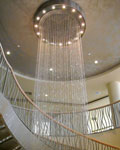
www.bluworldusa.com
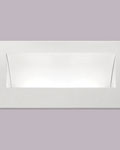

www.exceldryer.com
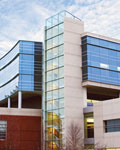
www.guardian.com
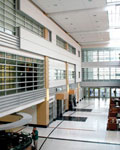
www.safti.com
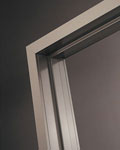
www.timelyframes.com









